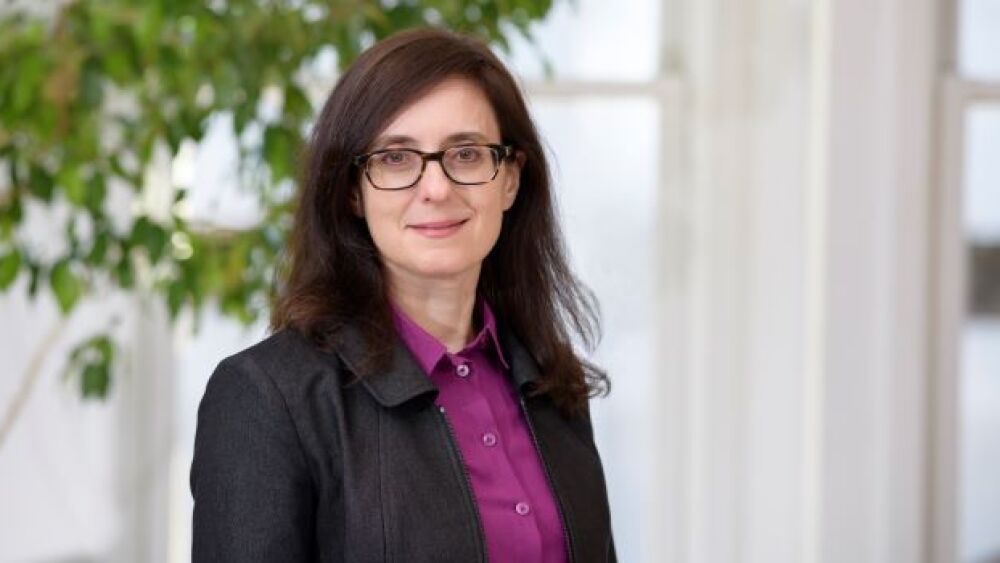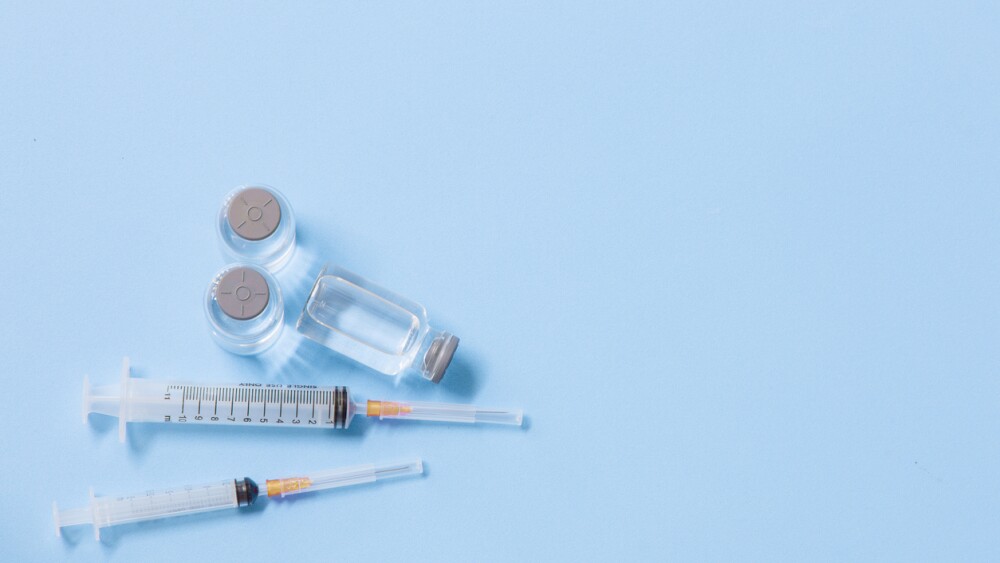Black/African American hematological cancer patients tend to have the worst outcomes. This is partly driven by a lack of access to allogeneic hematopoietic stem cell transplant and available donors.
Gamida Cell CMO and CSO Dr. Ronit Simantov, M.D./Courtesy of Gamida Cell
Blood cancers – leukemia, lymphoma, myeloma – can strike anyone at any time. While different hematological cancers differ in propensity between racial and ethnic groups, by and large, everyone is susceptible. Outcomes between ethnic groups, however, are often starkly different, with Black/African American patients tending to fare the worst. One primary reason for this increased mortality is a lack of access to allogeneic hematopoietic stem cell transplant (HCT), which for many, is the best chance of a cure.
Laying Out the Problem
It’s a topic Dr. Abeer Madbouly, Ph.D., principal bioinformatics scientist with Be The Match, recently addressed in a discussion at the Transplantation & Cellular Therapy Meetings of ASTCT. Be the Match is the world’s largest and most diverse bone marrow donor registry, and Madbouly emphasized the latter in an interview with BioSpace.
The registry provides an unrelated donor or cord blood for patients who are unable to find a matched donor within their family. The gold standard for HCT is a matched sibling, followed by a matched unrelated adult donor, Madbouly said. “By match, we mean a match on a genetic system, or group of genes, called HLA (human leukocyte antigen),” she explained, suggesting that we think of it as trying to match the immune systems of the donor and recipient.
She explained that the odds are higher for a patient to find a successful match within their ethnic or racial group, “because of how nature works and how the immune system evolves.”
This is where the disparities begin to jump out. Only 20% of Black cancer patients are able to find a matched, unrelated donor through donor registries. Why is this the case?
“The majority of the donors that we have on the registry in terms of race and ethnicity are white. That is about two-thirds of the donor registry right now,” Madbouly said. “The remaining third is basically encompassing all other races and ethnicities.”
Within this remaining third, the most genetically diverse individuals are those of African descent, she said, adding that right now, “this is probably the smallest group that we have.” There are many reasons for this, and Madbouly outlined just a couple as being socioeconomic and a lack of trust in the healthcare system. “There’s a lot of history that is not working in our favor, unfortunately.”
The ideal donor, Madbouly said, is a young adult male (in women, pregnancy leads to the accumulation of antibodies that can cause graft versus host disease or rejection in the recipient). But donor age, she said, is the most important factor for a good outcome. Thus, when registered donors reach the age of 61, they roll off the registry. In 2021, she noted, the number of African American donors recruited was negative, meaning that Be the Match rolled off more donors than it was able to recruit. “So that’s a serious problem that we’re having right now.”
Another challenge, Madbouly said, is that “the white donors, especially the female donors, are more available than the non-white donors.” She pointed to factors including lack of ability to take time off work, socioeconomics and a lack of engagement.
Genetic Diversity
The third challenge, she said, goes back to genetic diversity. “For African patients, there are a lot more HLA types…to match than there are for white donors. We did a calculation once that if we recruited all the African Americans in the U.S., there still probably wouldn’t be enough to cover all the African American patients in need.”
Intrigued, we asked Madbouly to explain the reason behind this.
“The most dominant evolutionary theory right now is that we all came out of Africa. So it’s the oldest immune system…the oldest humans on Earth are African, which means their immune systems are probably more diverse because of what they’ve been exposed to, than any other ethnic group that exists right now,” she explained.
Adding to the difficulty in finding an HLA match for this group, Madbouly said, “African Americans are historically a mix of African ancestry and European ancestry that happened several generations ago. So now when you add this mix to an originally very diverse genetic system, you add more diversity to the pool.”
The other ethnic groups in most need of more options, Madbouly said, are Hispanics and those of multiple ethnicities, a group she said has been growing very rapidly. She shared that there are actually more donors of mixed ancestry than African Americans in the registry.
Madbouly explained that because matching methods were originally designed to model single-race groups, “now we’re having to develop multiple methods and bioinformatics methods so we can match properly and [find] a better match for individuals of mixed ethnic origin.”
An Emerging Option: Gamida Cell’s Omidubicel
There is another emerging resource, however - an allogeneic advanced cell therapy donor source being developed by next-generation cell therapy company Gamida Cell. The company’s product, omidubicel, is an investigational, first-in-class, advanced nicotinamide (NAM)-enabled stem cell therapy intended for patients with hematologic malignancies and other blood diseases in need of a bone marrow transplant.
One option for hematological cancer patients without a matched family member is umbilical cord blood. Dr. Ronit Simantov, M.D., CMO and CSO at Gamida Cell, told BioSpace how omidubicel could make this option available to more patients.
“[Cord blood] is a wonderful source of stem cells because it doesn’t need the same level of matching that adult donors will need,” she said. “If you use umbilical cord blood, you don’t need to match as exactly, so somebody who is a minority will have more likelihood of getting a match to the cord blood than a match from an adult donor registry.” But, there are limitations to this approach. “Because it’s such a small sample, there are not enough stem cells. It’s just too small to suffice for most adults for their transplant.”
Simantov explained the mechanism behind Gamida Cell’s lead product candidate.
“Omidubicel is cord blood that’s been taken through our manufacturing process based on expanding the cells, using nicotinamide and our technology that expands the stem cells while retaining their STEM function. That allows them to be used as a bone marrow transplant and repopulate the entire immune system of the patient who receives them so that they can fight their blood cancer,” she said.
The same matching principle that applies to cord blood applies with omidubicel, making it a promising potential option for ethnic minorities or those with mixed racial heritage. Simantov noted that the latter group, patients of mixed ethnicity, “are even more in need of something that can be a bone marrow transplant.”
Omidubicel may be available to all Americans before long, as Gamida Cell announced on June 2 that it had completed a rolling Biologics License Application submission to the U.S. Food and Drug Administration. If approved, it would be the first advanced cell therapy product for patients in need of allogeneic HCT.
The BLA is based on Gamida Cell’s pivotal Phase III study which evaluated the efficacy of omidubicel compared with standard umbilical cord blood (UCB) transplantation. The trial hit its primary endpoint, which was time to neutrophil engraftment. In fact, median time to neutrophil engraftment was 12 days for the omidubicel arm vs. 22 days for the control group. The therapy also demonstrated superior hematopoietic recovery and clinical outcomes when compared to standard UCB transplantation.
The same study demonstrated the ability of omidubicel to be used as a donor source for racially and ethnically diverse patients, as 40% of patients enrolled in the study were non-white.
“First of all, that’s unusual in clinical trials in general,” Simantov said. “It really speaks to the fact that these are patients who needed this type of therapy. The fact is, they came into the study because they needed a different source of transplant.” To be admitted to the study, patients needed to have a disease that would qualify them for transplant and lack another feasible source.
Gamida Cell devised a projection model to understand how the availability of omidubicel would address health disparities. Outcomes for omidubicel, along with matched or mismatched unrelated donor, haploidentical (such as a parent or child) and umbilical cord blood sources, or no transplant at all, were assessed by race/ethnic group. Model inputs for each source were drawn from clinical trials, public Center for International Blood & Marrow Transplant Research (CIBMTR) and U.S. Dept of Health and Human Services data, and published studies.
This study found that omidubicel use in eligible patients was associated with higher proportions of patients undergoing allogeneic HCT, decreased time to transplant and overall improved outcomes. These improvements were the greatest among racial minorities. With 20% usage of omidubicel, increased one-year survival time ranged from 2.5% for white patients (who currently have reasonable access on the national registry) to 6.3% for Black patients (who do not).
While Gamida waits to hear omidubicel’s fate from the FDA, the company is treating patients with the therapy through an expanded access study.






